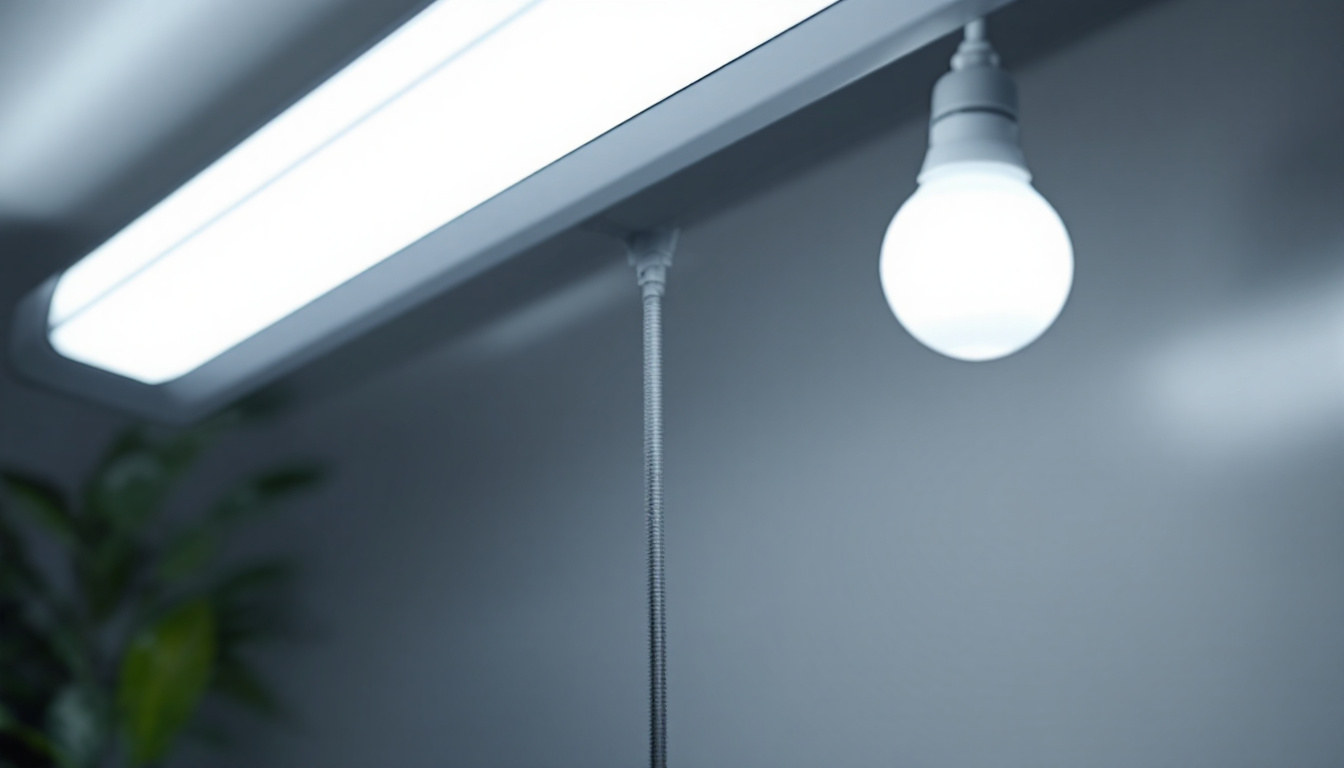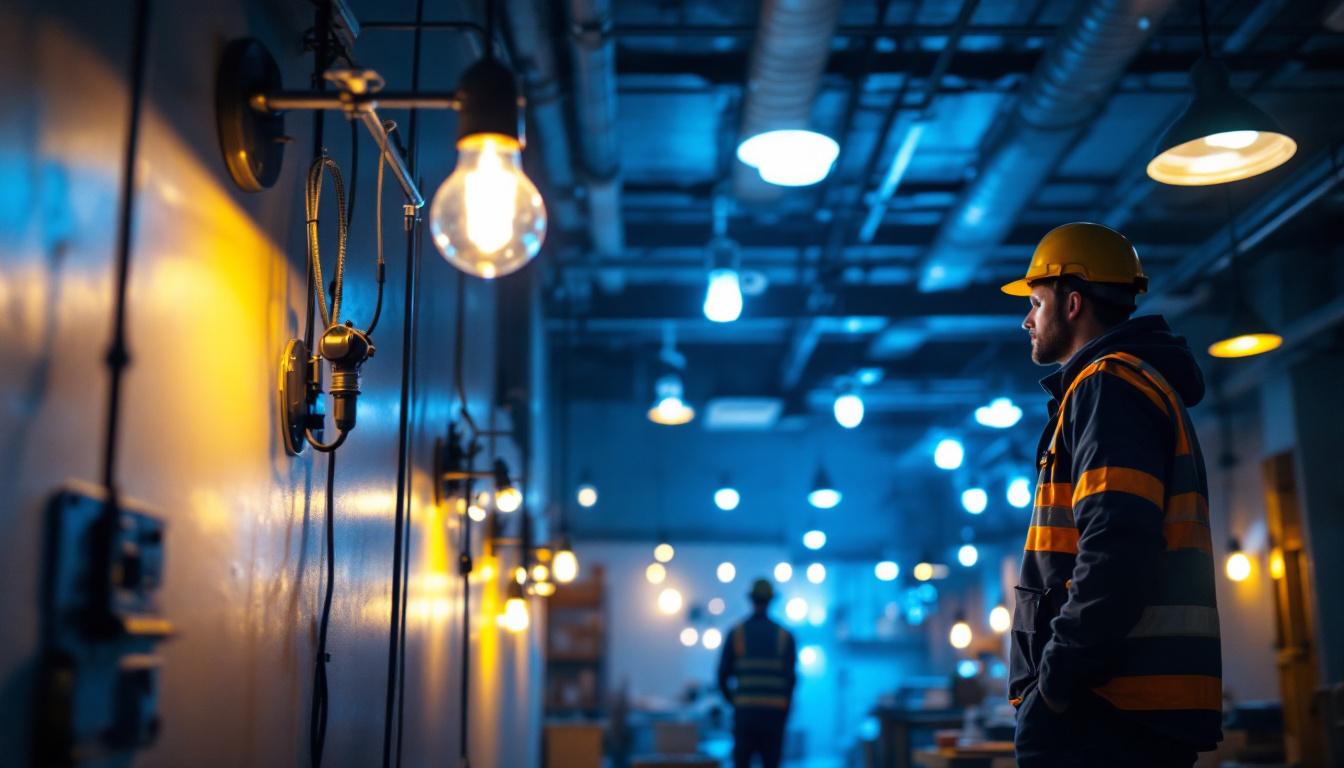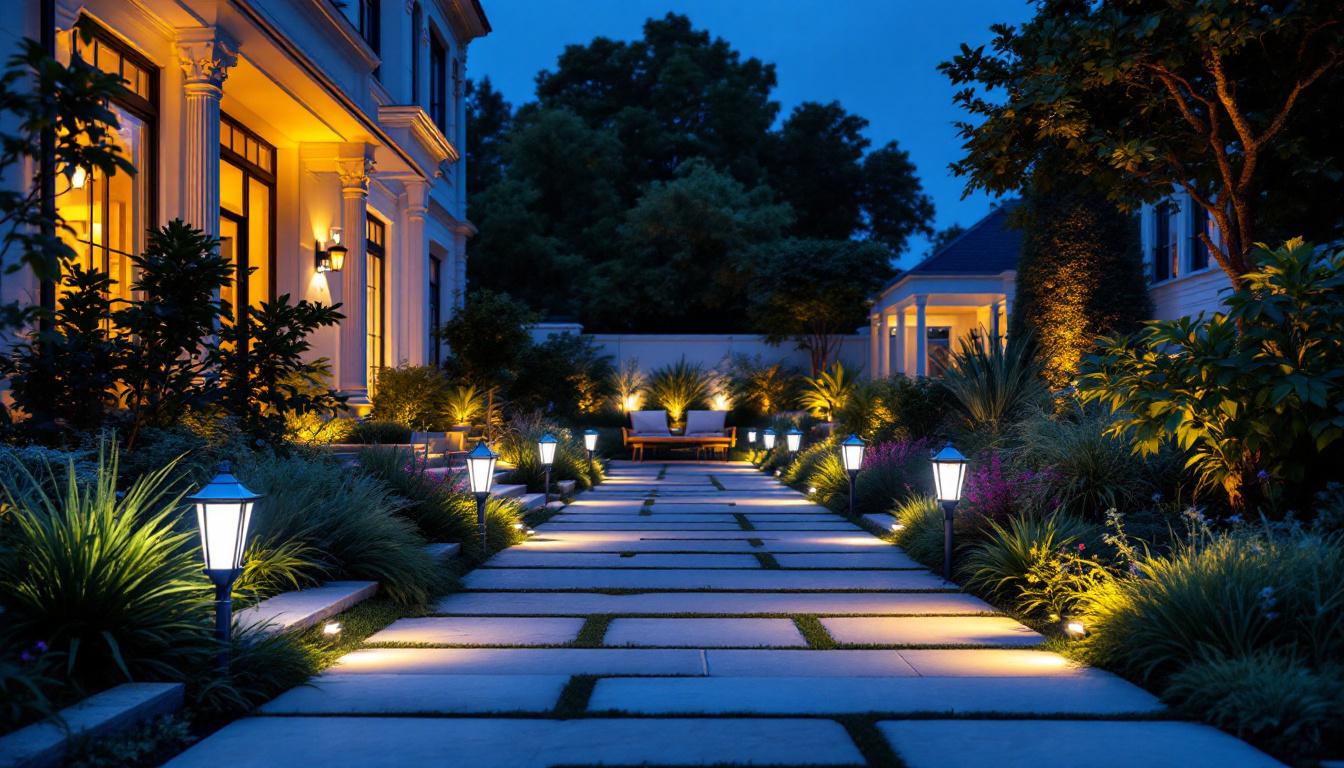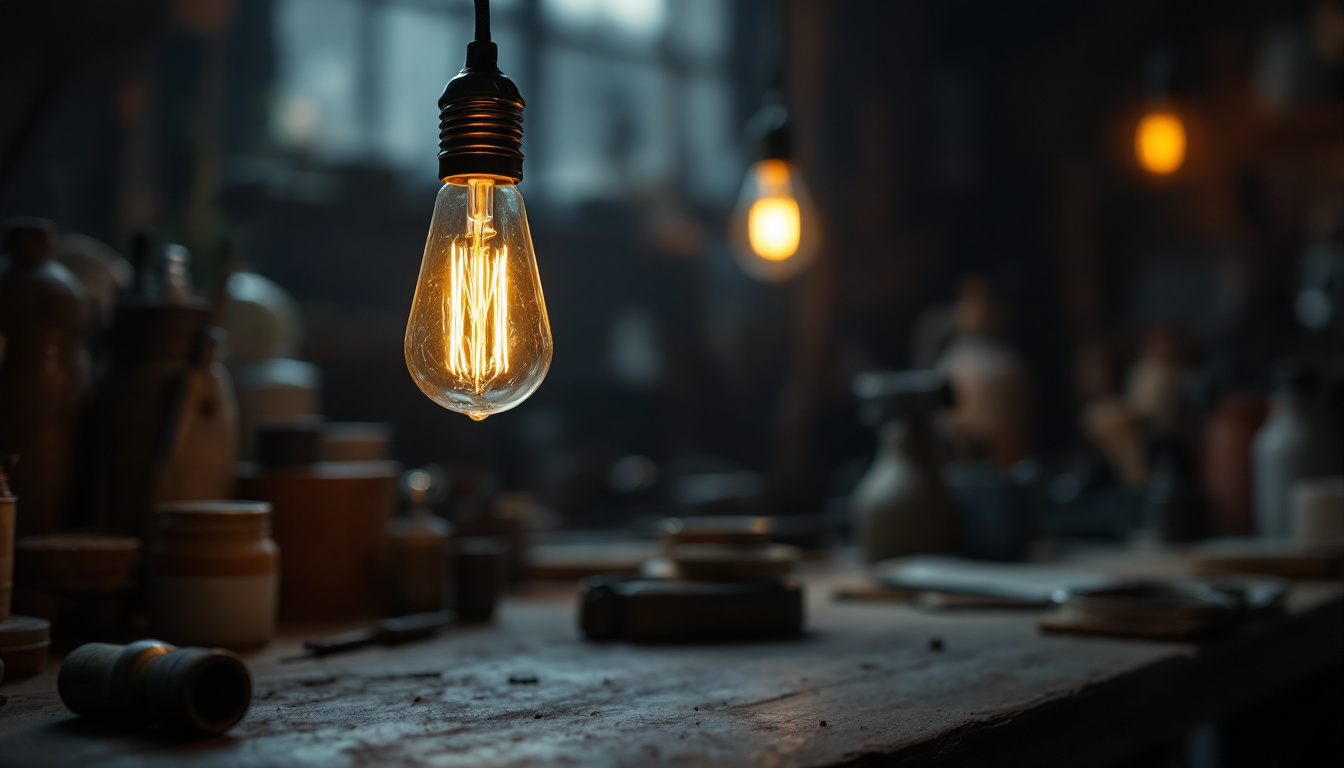
In today’s world, energy efficiency is more than just a trend; it’s a necessity. As lighting technology advances, many contractors are faced with the task of converting outdated fluorescent lighting systems to more efficient LED alternatives. This transition not only benefits the environment but also offers significant cost savings for clients. This article will guide lighting contractors through the process of changing fluorescent lights to LED, ensuring a smooth and effective upgrade.
Before diving into the conversion process, it’s essential to understand why LED lighting is becoming the preferred choice. LEDs offer numerous advantages over traditional fluorescent lights, making them a compelling option for both residential and commercial spaces.
One of the most significant benefits of LED lighting is its energy efficiency. LEDs consume up to 75% less energy than fluorescent bulbs, leading to substantial reductions in electricity bills. This efficiency not only helps clients save money but also contributes to a lower carbon footprint. Furthermore, the reduced energy consumption translates into less demand on power plants, which can help mitigate the environmental impact associated with energy production.
LEDs have a much longer lifespan compared to fluorescent lights. While a typical fluorescent bulb lasts around 10,000 hours, LEDs can last up to 25,000 hours or more. This longevity means fewer replacements, reducing maintenance costs and labor for contractors. Additionally, LEDs are more resistant to shock, vibrations, and extreme temperatures, making them ideal for a variety of applications, including outdoor lighting and industrial settings where durability is paramount.
LEDs provide better light quality with higher color rendering indexes (CRI), allowing for more accurate color representation. This feature is particularly important in settings such as retail or art galleries, where color accuracy is crucial. Additionally, LEDs offer instant brightness without flickering, enhancing the overall user experience. Beyond aesthetics, the ability to choose from a wide range of color temperatures allows users to create the desired ambiance in any space, whether it’s a warm, inviting glow for a home or bright, crisp lighting for a workspace.
In addition to energy savings, the environmental benefits of LED lighting cannot be overlooked. Unlike traditional bulbs, LEDs do not contain harmful substances like mercury, which poses a risk during disposal. This makes LEDs a safer option for both consumers and the environment. Moreover, the reduced energy consumption associated with LEDs helps decrease greenhouse gas emissions, contributing to a more sustainable future. As more individuals and businesses make the switch to LED technology, the cumulative effect can lead to significant environmental improvements on a global scale.
Another exciting aspect of LED lighting is its compatibility with smart technology. Many LED systems can be integrated with smart home devices, allowing users to control their lighting remotely via smartphones or voice-activated assistants. This level of control not only enhances convenience but also enables users to optimize their energy usage further. For instance, programmable timers and dimmers can be set to adjust lighting based on occupancy or time of day, maximizing efficiency and comfort. As technology continues to evolve, the integration of LEDs with smart systems is likely to become even more sophisticated, paving the way for innovative lighting solutions that cater to modern lifestyles.
Before initiating the conversion, a thorough assessment of the existing fluorescent lighting system is necessary. Understanding the current setup will help in selecting the appropriate LED replacements and ensure a seamless transition. This initial evaluation not only aids in identifying potential challenges but also provides an opportunity to consider the overall lighting design and its impact on the space.
Fluorescent lights come in various forms, including tube lights, compact fluorescent lamps (CFLs), and recessed fixtures. Identifying the type of fixture is crucial as it determines the compatibility with LED replacements. For instance, T8 and T12 tubes are common in commercial settings, while CFLs are often found in residential applications. Additionally, understanding the specific application of each fixture—such as whether it is used for general illumination, task lighting, or accent lighting—can influence the choice of LED products. Each type of fixture may also have different lumen outputs and color temperatures, which should be matched to the needs of the space to maintain functionality and aesthetic appeal.
Inspect the electrical system to determine if any modifications are required for the LED installation. Some LED fixtures are designed to work with existing ballasts, while others may require a direct wire connection. Understanding the current wiring and ballast configuration will help contractors make informed decisions during the conversion process. Furthermore, it is essential to assess the overall energy consumption of the current system; this not only highlights potential savings but also informs the selection of LED products that can maximize efficiency. Consideration should also be given to the dimming capabilities of the existing system, as many modern LED fixtures offer advanced dimming options that can enhance the versatility of the lighting design.
Once the assessment is complete, the next step is to select the appropriate LED replacements. This choice will depend on various factors, including the type of fluorescent fixture, desired brightness, and color temperature.
LEDs come in various shapes and sizes, including tube replacements, retrofit kits, and integrated fixtures. Tube replacements are designed to fit directly into existing fluorescent fixtures, while retrofit kits allow for more extensive upgrades. Integrated fixtures, on the other hand, come as complete units and may require additional installation work. Each type has its own advantages; for example, tube replacements are often the easiest and most cost-effective solution, making them ideal for quick upgrades. Retrofit kits, while slightly more complex, can enhance energy efficiency and provide a more modern lighting solution, appealing to those looking to improve both aesthetics and functionality. Integrated fixtures, though requiring more effort to install, often come with advanced features such as dimming capabilities and smart technology integration, which can significantly enhance the user experience.
When selecting LED bulbs, consider the lumen output and color temperature. Lumen output measures brightness, while color temperature affects the ambiance of the space. For instance, a cooler color temperature (5000K) is suitable for workspaces, while warmer temperatures (2700K-3000K) create a cozy atmosphere for residential areas. Additionally, it’s essential to think about how these factors interact with the specific activities taking place in each room. For example, in a kitchen where food preparation occurs, a bright, cool light can enhance visibility and make tasks easier, while in a living room, a softer, warmer light can promote relaxation and comfort. Furthermore, some LED options offer adjustable color temperatures, allowing users to customize their lighting to suit different times of day or activities, providing versatility that can enhance both productivity and leisure.
With the right LED replacements chosen, it’s time to prepare for installation. Proper preparation ensures a safe and efficient conversion process, minimizing disruptions and potential hazards.
Before beginning the installation, gather all necessary tools and materials. Common tools required include screwdrivers, wire strippers, and voltage testers. Additionally, ensure that the selected LED replacements and any required wiring or connectors are on hand.
Safety should always be a priority during any electrical work. Ensure that the power is turned off at the circuit breaker before starting the installation. Using personal protective equipment, such as gloves and safety goggles, is also recommended to prevent injuries.
Now that everything is prepared, it’s time to proceed with the installation. Following a systematic approach will help ensure that the conversion is completed efficiently and safely.
Begin by carefully removing the existing fluorescent fixtures. This typically involves unscrewing the fixture from the ceiling or wall and disconnecting the wiring. Take care to note how the wiring is connected, as this will be helpful when installing the new LED fixtures.
Once the old fixtures are removed, it’s time to install the new LED replacements. If using tube replacements, simply insert them into the existing sockets. For retrofit kits, follow the manufacturer’s instructions to connect the new fixtures to the existing wiring. Ensure that all connections are secure and that there are no exposed wires.
After installation, turn the power back on and test the new LED lights. Check for proper operation and ensure that there are no flickers or dim spots. If any issues arise, double-check the wiring and connections to troubleshoot the problem.
After successfully converting fluorescent lights to LED, there are several considerations to keep in mind to maximize the benefits of the new lighting system.
While LEDs require less maintenance than fluorescent lights, it’s still essential to educate clients on proper care. Advise them on how to clean the fixtures and the importance of monitoring for any unusual signs, such as flickering or dimming, which may indicate a need for attention.
Encourage clients to explore additional energy-saving measures, such as installing motion sensors or dimmers. These features can further enhance energy efficiency and provide tailored lighting solutions based on specific needs.
Converting fluorescent lights to LED is a valuable upgrade that benefits both contractors and clients. By understanding the advantages of LED lighting, assessing existing setups, selecting the right replacements, and following a systematic installation process, lighting contractors can provide energy-efficient solutions that meet modern demands.
As the industry continues to evolve, staying informed about the latest lighting technologies and installation techniques will ensure that contractors remain competitive and capable of delivering high-quality service. Embracing the shift to LED lighting not only enhances energy efficiency but also contributes to a sustainable future.
Ready to take your lighting projects to the next level? At LumenWholesale, we specialize in providing contractors with the highest quality, spec-grade LED lighting products at unbeatable wholesale prices. Say goodbye to local distributor markups and hello to our extensive selection that meets rigorous industry standards. With free shipping on bulk orders, you can trust that you’re getting premium lighting solutions at the best value, without any hidden fees. Elevate your energy-efficient lighting conversions and experience the best in wholesale lighting today.

Discover how LED 4-foot bulbs can transform your lighting projects and help you secure more contracts.

Illuminate your projects with precision using our comprehensive guide on exterior white lights.

Discover how in-ground solar lights are revolutionizing the lighting industry and impacting contractors’ profitability.

Discover the fascinating history of the light bulb and explore essential best practices for modern lighting contractors.